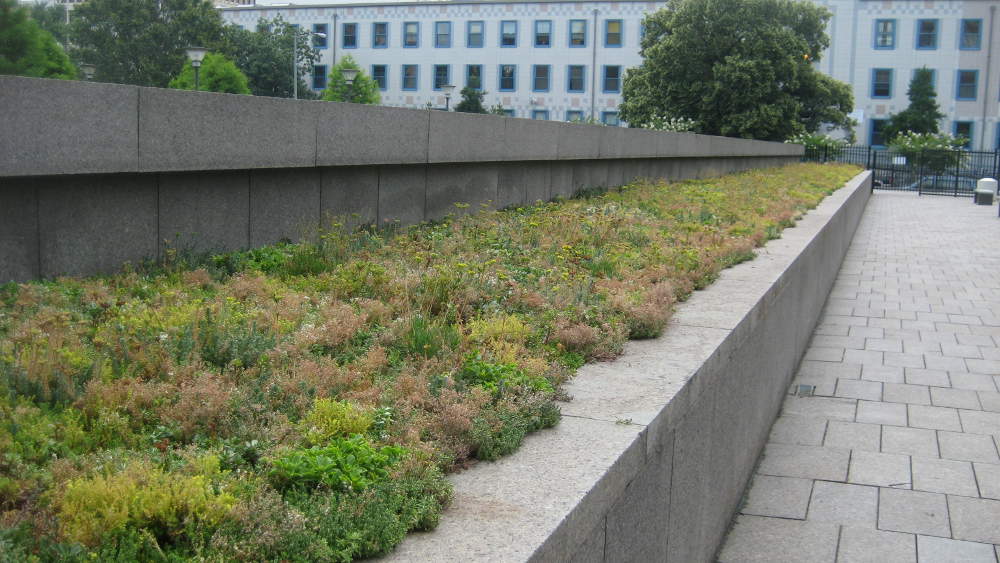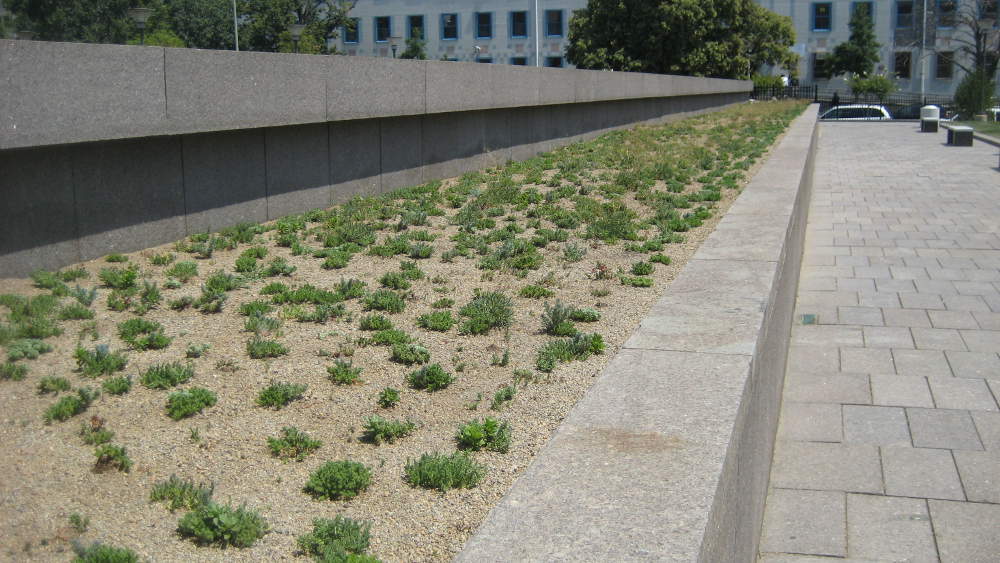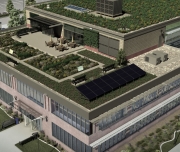
U.S. Tax Court Planted Roof After Establishment

U.S. Tax Court Planted Roof Before Establishment
The first years of a planted roof’s existence are considered an establishment period, in which maintenance is critical to the roof’s long-term success and maintenance requirements are at their greatest. Maintenance of a planted roof includes weeding, harvesting cuttings and distributing them in bare spots to improve coverage, checking for loss of growth medium, and inspecting for other potential problems.
Annual maintenance of planted roofs costs from 21 cents to 31 cents more per square foot per year than maintenance of a black roof. White roofs typically need more maintenance than black roofs, as they must be kept free from debris to continue to reflect solar radiation as expected.
See GSA's Green Roof page for additional maintenance best practices.
In many areas of the United States it is possible to design vegetative roofs without irrigation, including much of the Midwest and East. Even in arid climates, the demand for irrigation water can be greatly reduced by introducing water at the bottom of the vegetative roof profile. However, during the 2-3 year establishment period, most plants will require water to be introduced at the top or near the top of the profile until the root system becomes more fully extended. Spray irrigation should be avoided, except as a temporary means of irrigation during establishment or during emergency drought conditions. The design of the vegetative roof profile should encourage plant roots to grow to the base of the profile. Filter fabrics should be 'root permeable.' The total thickness of the profile should not exceed the natural root depth of the plants selected for the plant community.
- Given the misunderstood maintenance requirements for roofs, it could be argued that a permanent irrigation system is more efficient than random hand water by untrained building maintenance personnel (which is often the case).
- A properly adjusted irrigation system (by experienced installers) will almost always be more efficient than hand watering technique, if hand water is ever done. Where permanent irrigation systems are installed, include inspection and repair provisions in the ongoing maintenance.
- In every project case, regional location and site-specific issues should be considered when talking about irrigation and its potential implementation.
- Any irrigation system must be carefully managed, as over-watering can reduce the roof's ability to retain stormwater and may reduce the viability of the plants growing on the roof.
Leaks are generally caused by poor workmanship. Unless the problems are ubiquitous, a project failure will not result. However, the process of identifying and repairing leaks is relevant to consider. As in typical, non-planted roofs, presence of a leak is typically confirmed from water damage inside the building. There are two main methods to locate leaks: flood test and low-voltage electronic leak detection.During the process of leak detection and repair, the planted roof is excavated, the waterproofing is repaired, and the planted roof is replaced. Only an agent of the planted roof system provider should excavate the planted roof; an owner’s warranty may be compromised if an unapproved party excavates the planted roof. Proper medium handling techniques include:
- Segregating different types of medium (failure to do so may cause impeded drainage conditions)
- Proper plant-handling techniques (to allow successful replanting)
- Proper medium placement and grading techniques (to provide even system thickness and weight)
Flood Tests
Flood tests are the industry standard in typical roof construction. This test is used on many planted roof projects prior to planted roof installation, but becomes more difficult after the planted roof is installed. An agent of the planted roof system provider determines the region of the roof where the leak is likely to originate. The region is isolated and water is directed onto the area. By observing how flooding influences the rate of the leak, the damaged area can often be identified. Once all leaks are found and patched, the whole roof should be soaked to verify that leaks no longer exist. The process can be long and can result in significant damage to the planted roof. Efforts should be made to properly store and re-plant plants, but in some cases new vegetation will have to be purchased.
Low-voltage leak detection
Low-voltage leak detection allows precise identification of leak locations. The method requires a grounding plane underneath the waterproofing membrane; examples of appropriate grounding planes are reinforced concrete (except hollow core planks) and metal roof decks. When decks are constructed from electrically non-conductive materials, metal screens or foils can be placed under the waterproofing membrane and connected to a building ground such as steel plumbing. The leak detection technician introduces a low voltage electric charge onto the surface of the membrane.The charge travels through moisture in the vegetated cover, through any penetrations in the waterproofing, connects with the grounding layer, and is registered by the technician. Low-voltage leak detection can be performed before and after the planted roof is installed, on appropriately designed planted roofs. Leaks can be detected with precision, which minimizes damage to the planted roof.
Source: The Benefits and Challenges of Green Roofs on Public and Commercial Buildings



